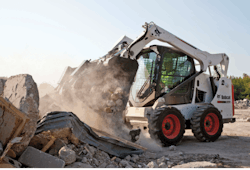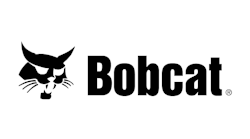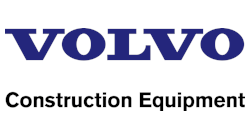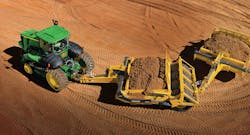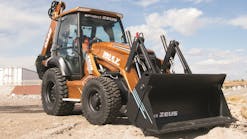Editor’s note: A digital version of this article first appeared on Forester Network’s website in April 2015.
Until recently, hydraulic pilot controls were considered the state of the art for skid-steer loaders. Pilot controls on joysticks hydraulically actuate the main hydraulic systems of a piece of mobile equipment. Such devices offer sensitive control due to low actuating forces and proportional control behavior. They’re much less fatiguing for an operator than earlier, mechanical controls (still favored by some), and they offer a long, maintenance-free service life.
But now, Caterpillar, John Deere, and Bobcat have begun to offer electro-hydraulic controls. “We use drive-by-wire technology,” says Gregg Zupancic, product marketing manager for skid-steer loaders at John Deere Construction and Forestry Division. With electro-hydraulic controls, the joystick is linked by wires to an electronic control unit (ECU)—the brains of the control. Other wires connect the ECU to the actual hydraulic valves that control movements of the machine and boom and bucket.
Editor's note: A digital version of this article first appeared on Forester Network's website in April 2015. Until recently, hydraulic pilot controls were considered the state of the art for skid-steer loaders. Pilot controls on joysticks hydraulically actuate the main hydraulic systems of a piece of mobile equipment. Such devices offer sensitive control due to low actuating forces and proportional control behavior. They’re much less fatiguing for an operator than earlier, mechanical controls (still favored by some), and they offer a long, maintenance-free service life. But now, Caterpillar, John Deere, and Bobcat have begun to offer electro-hydraulic controls. “We use drive-by-wire technology,” says Gregg Zupancic, product marketing manager for skid-steer loaders at John Deere Construction and Forestry Division. With electro-hydraulic controls, the joystick is linked by wires to an electronic control unit (ECU)—the brains of the control. Other wires connect the ECU to the actual hydraulic valves that control movements of the machine and boom and bucket. [text_ad] “You’ll see the industry move to electro-hydraulic controls, mainly because of expandability,” says Zupancic. “You can program more things. You can slow down the boom and bucket speed, or you can slow down the wheel speed. You can make the wheels max out at 30% of top speed, if you want to, for creeper control in slow-moving operations. Or you can program the boom to go to a certain height and stop. That’s a function of electro-hydraulic controls.” The disadvantage of hydraulic pilot controls, says Zupancic, is that you cannot expand the functions of the control system unless you add more hydraulic lines or have more ports in your hydraulic valve. John Deere and others still offer mechanical linkage, with which one’s feet control the boom arms and bucket—and levers control the driving functions. “But for about $2,500 more you can get pilot controls or electro-hydraulic controls, and you don’t have to fight those levers all day long,” says Zupancic. “And with electro-hydraulic controls you can change the control pattern. We can configure the steering and boom and bucket controls to suit the operator. You can drive with one hand or two.” Three Systems From Bobcat “Contractors have a choice of control options on many models of Bobcat skid-steer loaders when making a purchase decision,” says Mike Fitzgerald, loader product specialist, Bobcat Co. “The standard controls offered on all models were invented by Bobcat and remain one of the most popular control styles today.” With standard controls, dual levers control the drive functions while dual foot pedals control the lift and tilt functions. Also available on select models is the Advanced Control System (ACS). The ACS offers two control styles in one, and the operator can choose between standard controls or H-pattern hand controls. The Selectable Joystick Controls (SJC) option is the third control method offered by Bobcat. The SJC option allows operators to switch between two hand-control patterns, H-pattern or ISO. Komatsu uses the same proportional pilot control system on skid-steer loaders as on its larger construction equipment. “We find no benefit in electro-hydraulic controls for skid-steer loaders,” says Bob Beesley, product manager for skid-steer loaders and compact track loaders at Komatsu America Corp. “Pilot proportional controls make a machine more controllable than electric-over-hydraulic systems and are a vast improvement over mechanical/servo controls.” Radial Lift and Vertical Lift A perennial issue with skid-steer loaders is radial lift versus vertical lift. Major manufacturers offer both, but the difference is important. Bobcat, for example, offers both. “We recognize that contractors may benefit from one design or the other and offer both to best fit the applications being performed by different customers,” says Fitzgerald. Radial-lift-path machines have greater forward reach at mid-range heights. These machines are popular with operators who frequently load and unload palletized materials from trucks, or dump materials over walls or backfill. Vertical-lift-path machines, however, have more reach at full height, and keep the load closer to the machine at lower heights. These machines are popular for dumping materials in higher-sided trucks and hoppers, or placing materials at higher points. “A radial machine will dig a lot better; it will dig in hard soil, because you get about 30% more weight at the cutting edge on a radial lift machine. Plus, the radial lift arm arrangement is also stronger and will stand more abuse than a vertical lift machine.” says Beesley. “Of course, the vertical lift machine is more productive in lift and loading applications and is preferable in many applications. The decision of which type machine will be most productive is application driven. The better the application is understood, the more likely the machine can be matched to the job.” [text_ad use_post='27747'] Vertical lift machines do have more lifting capacity for the same size machine. “We offer both radial and vertical lift,” says Deere’s Zupancic. Deere offers seven models of skid-steer loaders, ranging from the 45-horsepower Model 313 to the 85-horsepower Model 332. The two smallest models are radial lift machines, and the remaining five are vertical lift units. John Deere uses a wheelbase that’s a little wider—for increased stability—compared to non-Deere machines, says Zupancic. Plus, the Deere’s weight distribution is a little different. “Our weight is 60% in the rear and 40% in the front, so when you load it up, you get close to 50:50 front-to-rear weight distribution,” he explains.“You’ll see the industry move to electro-hydraulic controls, mainly because of expandability,” says Zupancic. “You can program more things. You can slow down the boom and bucket speed, or you can slow down the wheel speed. You can make the wheels max out at 30% of top speed, if you want to, for creeper control in slow-moving operations. Or you can program the boom to go to a certain height and stop. That’s a function of electro-hydraulic controls.”
The disadvantage of hydraulic pilot controls, says Zupancic, is that you cannot expand the functions of the control system unless you add more hydraulic lines or have more ports in your hydraulic valve.
John Deere and others still offer mechanical linkage, with which one’s feet control the boom arms and bucket—and levers control the driving functions. “But for about $2,500 more you can get pilot controls or electro-hydraulic controls, and you don’t have to fight those levers all day long,” says Zupancic. “And with electro-hydraulic controls you can change the control pattern. We can configure the steering and boom and bucket controls to suit the operator. You can drive with one hand or two.”
Three Systems From Bobcat
“Contractors have a choice of control options on many models of Bobcat skid-steer loaders when making a purchase decision,” says Mike Fitzgerald, loader product specialist, Bobcat Co. “The standard controls offered on all models were invented by Bobcat and remain one of the most popular control styles today.”
With standard controls, dual levers control the drive functions while dual foot pedals control the lift and tilt functions. Also available on select models is the Advanced Control System (ACS). The ACS offers two control styles in one, and the operator can choose between standard controls or H-pattern hand controls. The Selectable Joystick Controls (SJC) option is the third control method offered by Bobcat. The SJC option allows operators to switch between two hand-control patterns, H-pattern or ISO.
Komatsu uses the same proportional pilot control system on skid-steer loaders as on its larger construction equipment. “We find no benefit in electro-hydraulic controls for skid-steer loaders,” says Bob Beesley, product manager for skid-steer loaders and compact track loaders at Komatsu America Corp. “Pilot proportional controls make a machine more controllable than electric-over-hydraulic systems and are a vast improvement over mechanical/servo controls.”
Radial Lift and Vertical Lift
A perennial issue with skid-steer loaders is radial lift versus vertical lift. Major manufacturers offer both, but the difference is important. Bobcat, for example, offers both. “We recognize that contractors may benefit from one design or the other and offer both to best fit the applications being performed by different customers,” says Fitzgerald.
Radial-lift-path machines have greater forward reach at mid-range heights. These machines are popular with operators who frequently load and unload palletized materials from trucks, or dump materials over walls or backfill. Vertical-lift-path machines, however, have more reach at full height, and keep the load closer to the machine at lower heights. These machines are popular for dumping materials in higher-sided trucks and hoppers, or placing materials at higher points.
“A radial machine will dig a lot better; it will dig in hard soil, because you get about 30% more weight at the cutting edge on a radial lift machine. Plus, the radial lift arm arrangement is also stronger and will stand more abuse than a vertical lift machine.” says Beesley. “Of course, the vertical lift machine is more productive in lift and loading applications and is preferable in many applications. The decision of which type machine will be most productive is application driven. The better the application is understood, the more likely the machine can be matched to the job.”
Vertical lift machines do have more lifting capacity for the same size machine. “We offer both radial and vertical lift,” says Deere’s Zupancic. Deere offers seven models of skid-steer loaders, ranging from the 45-horsepower Model 313 to the 85-horsepower Model 332. The two smallest models are radial lift machines, and the remaining five are vertical lift units.
John Deere uses a wheelbase that’s a little wider—for increased stability—compared to non-Deere machines, says Zupancic. Plus, the Deere’s weight distribution is a little different. “Our weight is 60% in the rear and 40% in the front, so when you load it up, you get close to 50:50 front-to-rear weight distribution,” he explains.